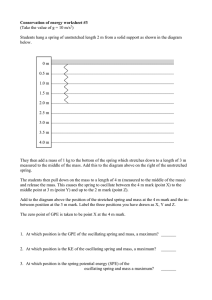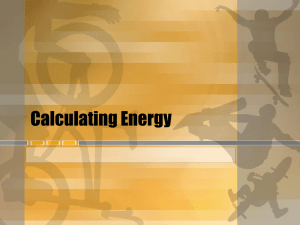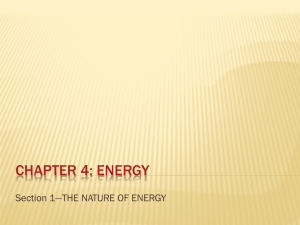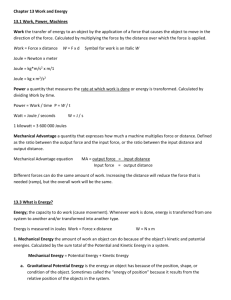File
advertisement
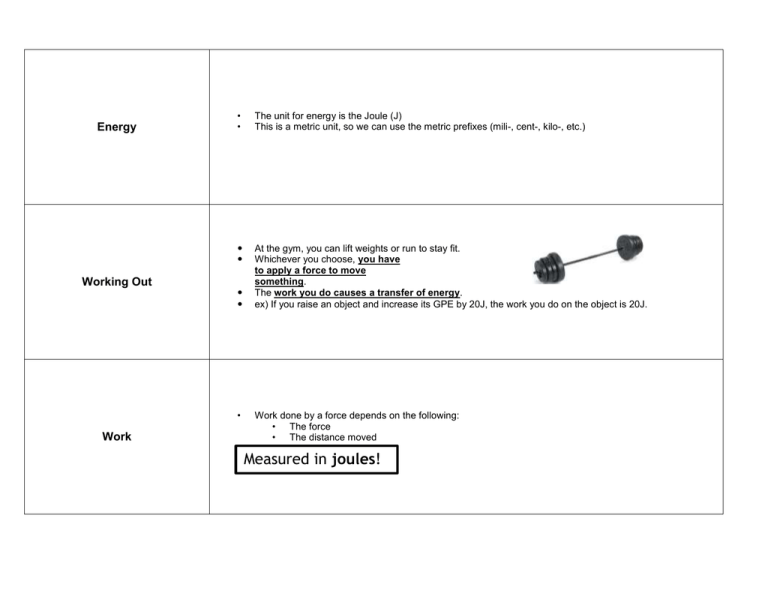
Energy Working Out • • The unit for energy is the Joule (J) This is a metric unit, so we can use the metric prefixes (mili-, cent-, kilo-, etc.) At the gym, you can lift weights or run to stay fit. Whichever you choose, you have to apply a force to move something. The work you do causes a transfer of energy. ex) If you raise an object and increase its GPE by 20J, the work you do on the object is 20J. • Work Work done by a force depends on the following: • The force • The distance moved Measured in joules! • • Gravitational Potential Energy Kinetic Energy Measured in joules! • Gravitational Potential Energy = mass x gravity x height or mgh Energy of an object due to its motion. Kinetic Energy depends on the following: The mass of the object The velocity of the object Kinetic Energy = 1/2mv2 • Power The gain of GPE of the object = the work done on the object to make it move. GPE Depends on the following: • The Height of the Object • The mass of the object • • When you use an elevator, a powerful electric motor pulls you and the elevator up. The work done by the lift motor transfers energy from electricity to GPE. Thermal energy and sound energy are also produced. The work done per second by the motor is the output power of the motor The more powerful the motor is, the faster the elevator takes you up. We measure the power of an appliance in watts (W) or kilowatts (kW) or megawatts (MW). One watt is a rate of transfer of energy of 1 joule per second (J/s). For example: A 5W electric flashlight would transfer 5 J every second as light energy and heat energy to its surroundings. An elevator motor with an output power of 6,000 W would transfer 6,000 J to the elevator as GPE every second. Power Unit Some typical power values Machines and Work • Flashlight • 1W • An electric light bulb • 100 W • An electric cooker • 10,000 W OR 10 kW • A train engine • 1,000,000 W or 1 MW • Saturn V Rocket • 100 MW • The Sun • 3.86 x 1020 MW The faster a machine can do work, the more powerful it is. Whenever an object does work on an object, energy is transferred to the object. The useful energy transferred is equal to the work done. The output power of a machine is the rate at which it does work. This is the same as the rate at which it transfers useful energy.
